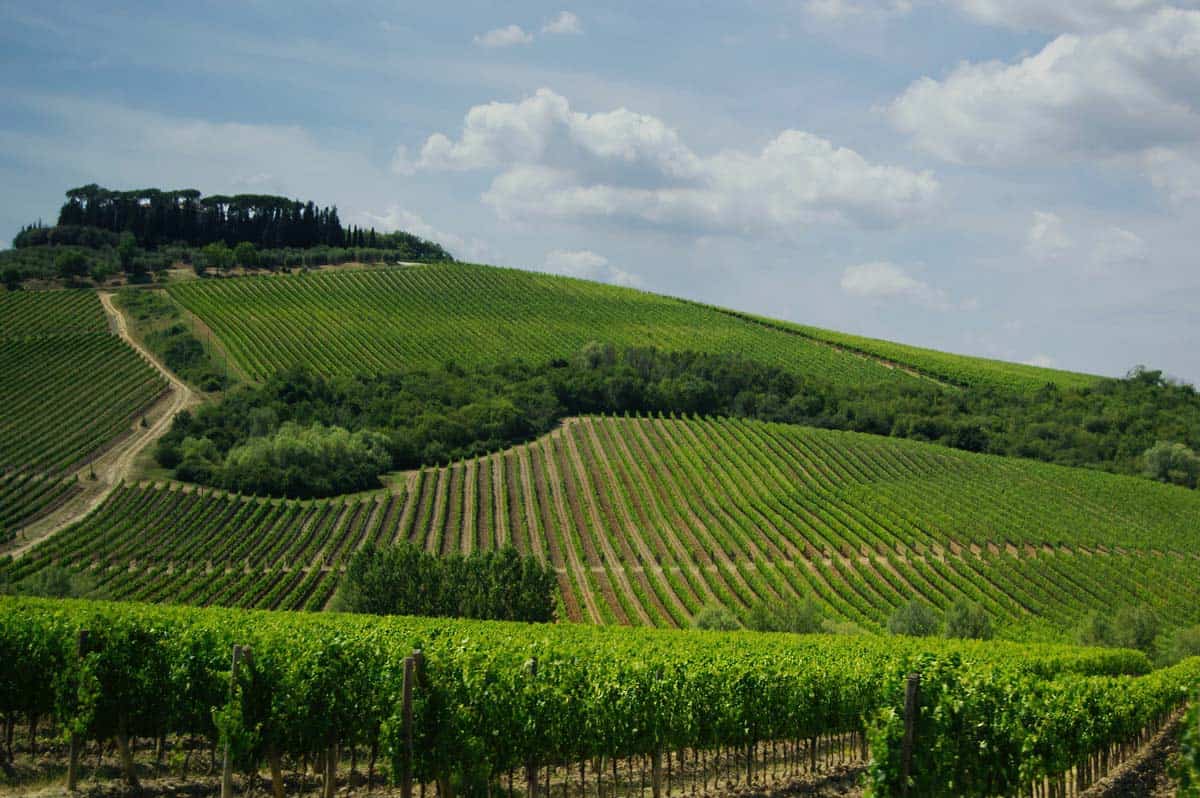
Editor’s Note: We share travel destinations, products and activities we recommend. If you make a purchase using a link on our site, we may earn a commission.
As I stared at the rolling hills of neatly carved green vineyards over the rim of a wine glass filled with Barolo, I could have pinched myself. I was on a wine tour in Italy with three close friends.
But there was only one problem: I knew nothing about wine.
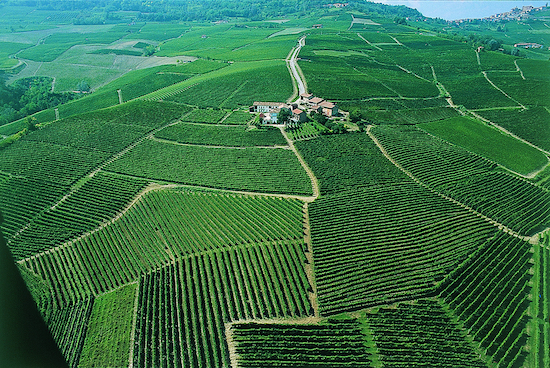
Wine Tasting Steps
Most of my wine experiences included a large box with a spout or the sales bin bottle with the most eye-catching label. But I was told all I needed to know was what I liked and didn’t like and to just enjoy. And I had picked the perfect country to do it in — Italy surpasses all countries in wine production.
Of course, they also gave me some basic ground rules to live (or drink) by. When tasting a wine, there are five steps: see, swirl, sniff, savor and swallow. Take the time to note clarity and color, observe the wine viscosity against the glass, detect notes and aromas, and taste each sip with intention and perception.
Learning how to properly taste a wine was very helpful, and it forced me slow down and appreciate the hard work that goes into creating a good wine.
During our trip we visited several different vineyards and wineries in Piedmont and Tuscany. Due to drastic temperature variation between day and night, Piedmont is ideal for obtaining high-quality red wines.
Piedmont vineyards grow Nebbiolo, Barbera, Moscato and Cortese grapes, which yield a variety of well-known wines such as Moscato, Barolo, and Barbera. After harvest, grapes are taken to the winery where they are fermented and aged into the beautiful bottles of perfection that we enjoy today.
Our first stop in Piedmont was the Gianni Gagliardo Winery, which produces the esteemed Barolo wine and offers 10 different wine selections. Known as “the king of wines” around the world, Barolo offers a balanced flavor array of fruit, acidity, tannin, aroma and age.
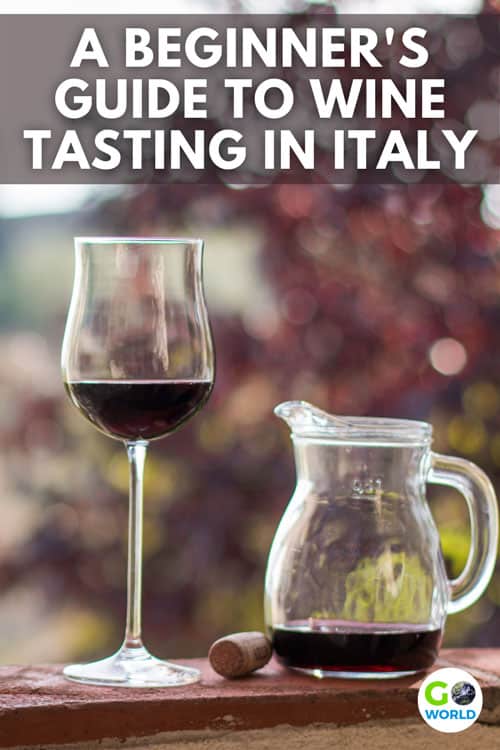
Wine Tasting Rooms in Italy
We met with Paolo Gagliardo, grandson of Gianni. We were given a tour of the wine cellars, fermentation barrels and shown the breathtaking view of vineyards. The winemaking process embodies so many complexities that it was a lot to take in, but it is fascinating to learn in detail about the art and science of wine.
After the tour, we sat at a large red circular table lit overhead by a single light in a dark room, where Paolo poured tasting samples of several different wines. We swirled the wine in our glasses and inhaled the aromas before taking a modest sip and letting the rich, burgundy liquid pour over our palates. They were all delicious, and I had to refrain from asking to have my glass filled to the brim.
Tasting samples are small, and you can taste several different wines before drinking a full glass. In wine tasting, it is customary to sample your wine and pour the remainder into a “tasting bucket.” This makes wine tasting in Italy more approachable for people (ahem) who want to experience each wine without turning into a glassy-eyed mess.
Our next Piedmont stop was Michele Chiarlo in La Morra, where Stefano Chiarlo hosted us at a breathtaking property perched atop fields of Nebbiolo vineyards.
The state-of-the-art tasting room takes place in a beautifully restored property amongst exposed brick and fermenting wine barrels, and houses a long dining table perched atop a floor that lights up like a white disco dance floor. The lighting effect serves both form and function as the illumination allows you to analyze wine color and clarity with precision.
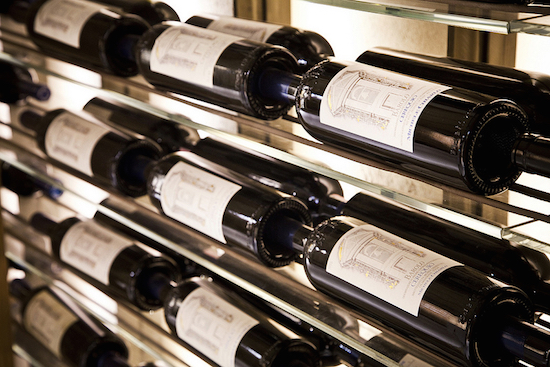
Tuscan Wines
Michele Chiarlo produces 24 different wines, so we weren’t lacking in options. The Barolo Cerequio and Barbera d’Asti Superiore Nizza La Court have received praise and accolades from Wine Spectator, Decanter, and Gambero Rossi for their high quality and flavor. The Chiarlo winery is surrounded by esteemed Barolo single vineyards and is a one-of-a-kind stop for the wine connosieur.
After a fresh, handmade and meticulously presented gourmet lunch of basil-encrusted filet mignon and pasta tossed with a tomato sauce and topped with burratta cheese, we sat drinking wine while gazing upon a vista of vineyards and rolling landscapes.
We didn’t stay at the Palas Cerequio hotel on the property, but the gorgeous views alongside the sparkling outdoor pool and quaint chapel made me wish we had. A young couple on their honeymoon that we met during the tasting told us they were thoroughly enjoying their stay.
After exploring Piedmont, we moved on to Tuscany. The Tuscan region is known for its hilly landscape and higher altitude, which causes a higher temperature variation, helping grapes maintain a balance of sugars, acidity, and aromatic qualities.
Tuscany is known primarily for producing red wine, most famously for Chianti, Brunello, and more recently for Super Tuscans. In the Tuscan region several grapes varieties are grown, including the Sangiovese, Cabernet Sauvignon, Trebbiano, and some Merlot.
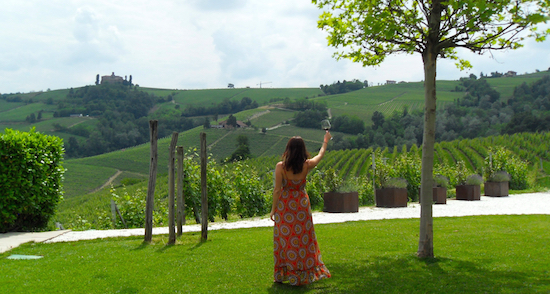
Rocca Delle Macie
My favorite Tuscany tour stop was Rocca delle Macie, in part because of our personable and entertaining host Georgetta. She not only embodied grace and sophistication with a perfectly tailored dress and Alexander McQueen sunglasses, she was entertaining, witty, and shared an abundant wealth of knowledge on wine, wine production, olive oil production, local history (ask about the black rooster) and Italian culture.
Out of all our tour stops, Rocca delle Macie covered every aspect of wine tasting in Italy most exhaustively from beginning to end. They also offer a full service restaurant, luxurious rooms to stay in, and beautiful Tuscan landscapes and abounding vineyards to gaze upon while enjoying a glass of Chianti in the setting sun.
While we toured the facility, Georgetta informed us that there are usually six bunches of grapes on a vine, which produces one bottle. She then led us to a positively enormous fermentation barrel holding 13,000 bottles of wine.
When she took us on a tour of the bottling production area, I felt like I had stepped onto the Italian version of ‘Laverne & Shirley’. Hundreds of bottles moved through a conveyor system to be labeled and foiled.
They also had Chianti wine, which must be comprised of at least 75 percent Sangiovese, and it was a treat to taste something in Italy that I had been familiar with for years.
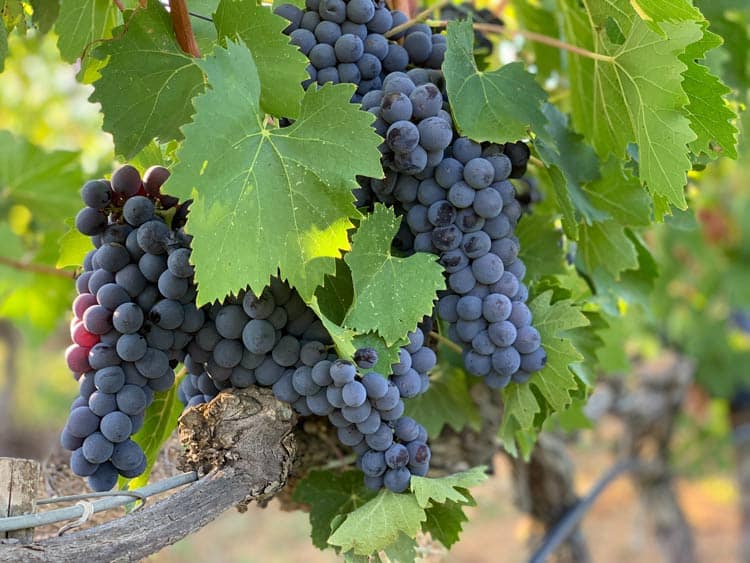
It was even more interesting to taste the subtle differences between the Chianti Classico, aged nine months, and the Grande Selezione, aged 30 months. Chianti is arguably the most recognized Italian wine in the world. Nine million cases are distributed across the globe each year.
They offer 21 different white and red wines, and during our stay I dare say we tried most of them.
Rocca delle Macie also houses the Olive Garden Culinary Institute of Tuscany, where 100 of the best-performing chefs and managers of U.S. Olive Garden Restaurants are admitted for specialized training. Although, if I am being honest, all the food we ate never resembled anything near a dish I’ve had at Olive Garden.
When it came time to head home, I had a wealth of wine knowledge under my belt (and a belt one notch looser). But I found it wasn’t the wine that I missed — it was the beautiful, breathtaking scenery that I was able to enjoy it in.
Book This Trip
Ready to try all the flavors of Tuscany? Start planning your trip by checking out local restaurant reviews, hotel and VRBO reservations, insider tips on the best vineyards and more on TripAdvisor and Travelocity. Next, you can pick your dates by comparing flight deals and rental cars on Kiwi.
More Helpful Links:
- Palladino: https://www.palladinovini.com/
- Michele Chiarlo: https://www.michelechiarlo.it/
- Rocca delle Macìe: https://www.roccadellemacie.com/
- Gianni Gagliardo: https://www.gagliardo.it/
- Fontana Fredda: https://www.fontanafredda.it/
- Rivetto: https://www.rivetto.it/en/
Author Bio: Gina Kremer has a self-diagnosed case of chronic wanderlust. Her travels and outdoor adventures have led her to temples in South Korea, castles in Scotland, national parks and trails across the U.S., and strolling down crowded streets in Spain and Italy…to name a few. She revels in the beauty and mystery of different cultures and appreciates the offerings of both a small town and bustling metropolis alike. Her work has appeared in Adventures of a Lifetime: Travel Tales from Around the World
- 6 Reasons to Visit Riga, Latvia Any Time of Year - April 18, 2024
- Travel Guide to Austria - April 17, 2024
- Travel Guide to Italy - April 17, 2024
